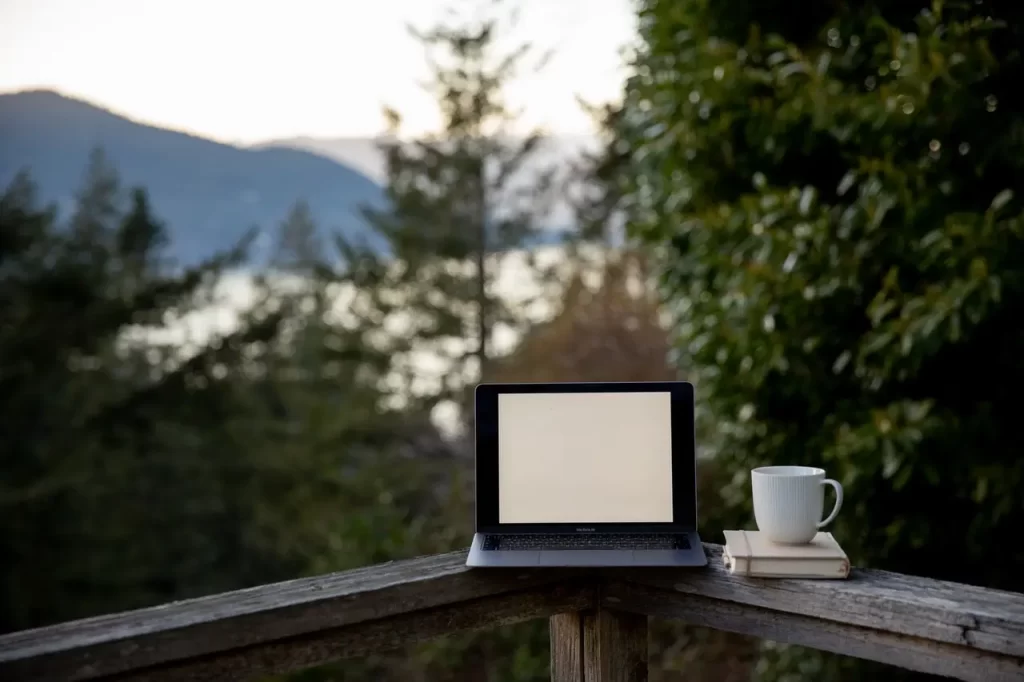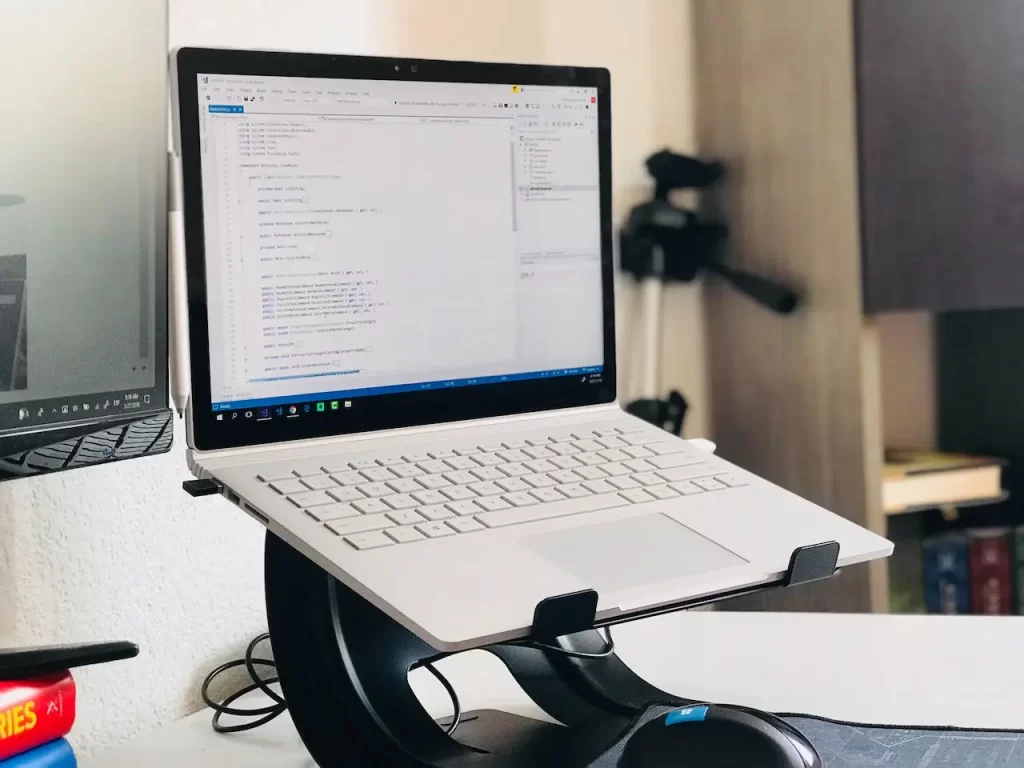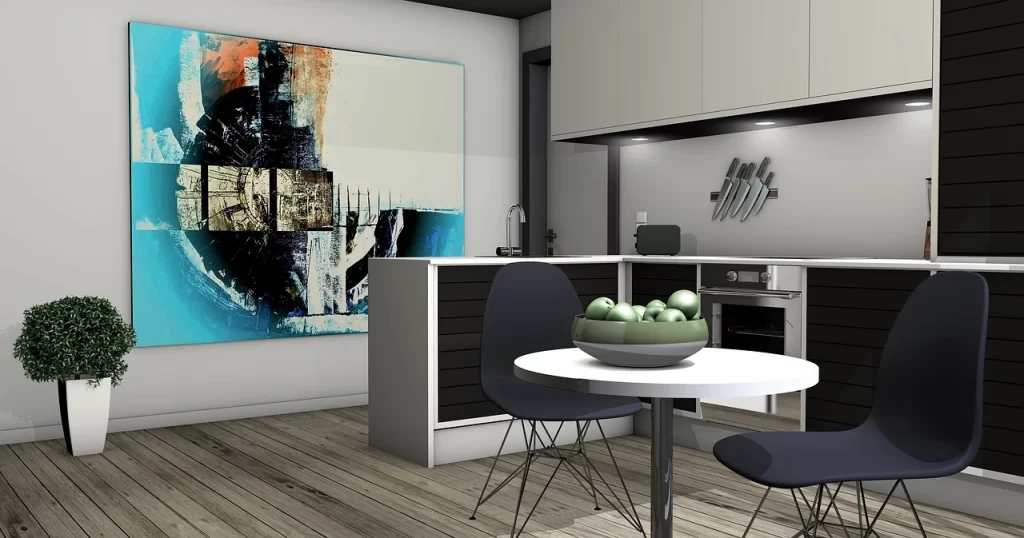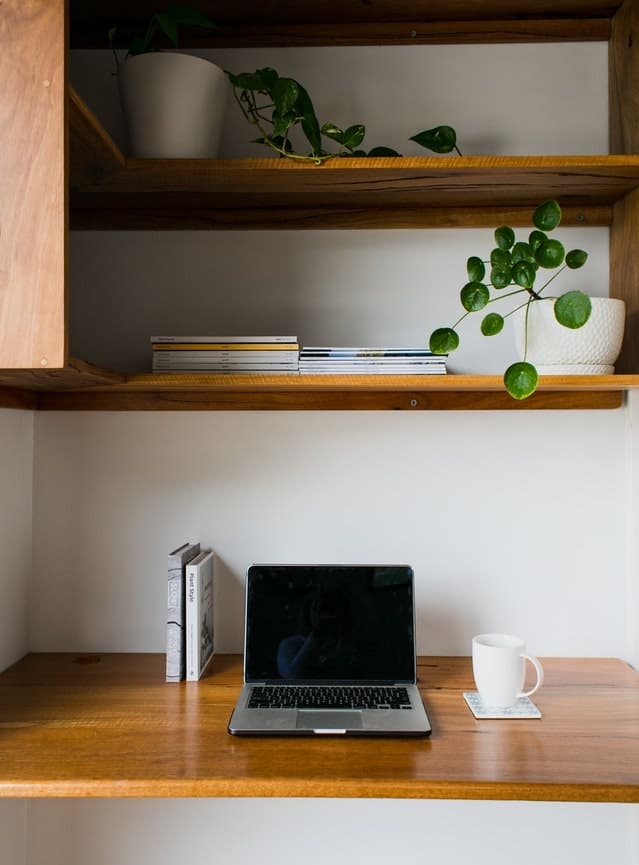
What are some good ways you can work without using a desk?
Perhaps for some reason, you do not have a desk right now in your office. You might decide to start working in a different room, a bedroom, or a temporary apartment and there isn’t a desk in there. Perhaps you are abroad and you are surprised to find that your hotel or Airbnb lacks a functional desk for your laptop. Or maybe you just want a change of environment from your typical desk.
This topic is also super relevant if you are the type who prefers to switch up the locations where you work, or if you occasionally find yourself succumbing to unproductive days at your main desk. I resonate with both of these things.
Sometimes we must be flexible. Learning to work comfortably from different spots and places – besides a comfortable fixed desk – is a skill that is valuable, especially if you are interested to function as a portable professional.
Without a proper work desk, there are ways to set up alternative ‘offices’ each day, using alternative tools.
It is important that these tools are somewhat easy to carry around, so that you can work almost anywhere in your apartment.
Some of these items are portable tools that you could even bring with you when you travel – consider a laptop stand and some portable lap desks. For some of these items, you may be able to find them within a hotel/Airbnb and could possibly serve as an alternative desk, such as an ironing board, a recliner, and floating or wall-mounted shelves.
Let’s explore ten of such alternative ways to possibly work productively without a desk.
1. Use a Laptop Stand

Perhaps you have spare tables or surfaces in your apartment that are not designed for laptop work.
These tables and surfaces may not be of the appropriate height. Some of them might be too low for you, such as a coffee table, rollable side table, or even your kitchen countertop if you want to work/read in a standing position.
A laptop stand can convert an unused flat surface in your apartment into a functional workspace.
When you raise your laptop towards eye level, this will create less strain on your neck and back. These postural improvements sound minor but can be pivotal in the long run, saving you from potential ailments.
Besides, if you use a laptop stand that is adjustable, you also improve your comfort as you can customize the height of the stand to whatever best suits your height and viewing needs.
2. Use a Lap Desk
A lap desk is a versatile piece of equipment that I’d recommend. In your apartment, it enables you to work in multiple spots and corners. Some lap desks are designed to be small, lightweight and thus portable – you could take to your coffee house, library, airport, or office.
The problem is that when you work on your couch, chair, or bed, you may sometimes place your laptop on your lap. Some of you might not even do this at all. Using a laptop on your lap gets uncomfortable due to the heat emanating from your laptop over a period of time. Further, the spatial constraint of working on your lap is obvious, compared to the spatial comfort that a lap desk could offer.
A lap desk is designed for you to be able to work comfortably with your laptop on your lap. It expands your working area and provides space for a laptop, and often space for a mouse and phone.
Here are some features that you can opt for in a lap desk:
- Useful components: Certain lap desks have built-in mouse pads and holders for your tablet and phone. Better still, get a lap desk with a retractable mouse pad so you can store it easily and compactly.
- Portability: Examine its dimensions (D x W x H) and whether it can fit your existing bag, along with its weight.
- Cushions: Lap desks with cushioning gives you more comfort and stability (cushions that ‘conform to your lap’), so that you can type freely with ease.
- Adjustable angles: Adjustable angles enable tilt and elevation, so you can customize your typing/viewing angle.
The HUANUO Adjustable Lap Desk meets most of these criteria. It is lightweight, big enough to fit most 15.6” laptops but small enough to fit into a regular-sized backpack. Better still, it has 8 adjustable angles and cushioning to support easy ergonomic use.
This article was originally published on unboundist.com. If it is now published on any other site, it was done without permission from the copyright owner.
3. Read or Watch Videos in a Recliner
Besides a desk, the other problem to solve is what chair you are going to use. If you use a random chair not designed for working on your laptop, you could encounter real back issues further down the line.
If you want a chair that can double up as a mini workspace, strongly consider a recliner. Sitting in a recliner, you can read a book, read articles on your laptop, watch videos comfortably, and take power naps.
But how exactly do you use a recliner correctly – how could a recliner can function as a mini makeshift workspace?
I’d stress that a recliner is best for reading, watching movies, and doing nothing with your hands. Either use a lap desk to hold your laptop or prop it up with some cushions. Ergonomically, the angle for typing might be awkward, so type sparingly and for very short periods of time at once. Placing a pillow behind your back can assist in keeping a good posture. Most recliner office chairs have a leg rest that provides support so that your feet do not hang in the air.
Work anywhere in your apartment for inspiration, while looking through the window at a scenic view or facing a wall containing your favorite vision board.
4. Work in Bed the Right Way
Working in bed is not ideal as you generally want to separate your working space from your resting space. However, if you lack desk space or if you are living in a small apartment, you may want to make a few concessions.
Working from your bed may be useful in certain situations. For example, it’s useful an hour or so before dinner when family members are home and all you have access to is your bedroom.
Once again, you want to use a lap desk to hold your laptop. It will make it so much easier and more comfortable to work on your bed.
Use pillows to prop yourself up (place them behind your back) so that you are in decent posture. Avoid straining your neck by looking down at your devices.
Again, it’s a good idea here to avoid strenuous cognitive work involving tons of concentration.
Ensure that your bed/mattress is upgraded, especially if you lie in bed for long periods and suspect that your bed/mattress may be contributing to aches in your shoulders and back.
5. Use an Ironing Board
An ironing board has become a trendy work-from-home hack. It can be super useful as a temporary makeshift desk. It is also a tool you could find in AirBnbs and even some hotel rooms.
The ironing board can fit smaller screens and desk essentials such as a laptop, tablet, phone, mouse and notepad.
Further, the ironing board has height adjustment. It has multiple uses – it can extend an existing desk space, function as an alternative desk on its own, or even work as a standing desk provided that it goes high enough. You can explore more ideas on using an ironing board as a desk here.
Yet, know that the ergonomics will not be perfect; you might experience some kind of strain working at an ironing board, simply because of its limited surface area. So it’s best to take occasional breaks.
6. Create a Kitchen Office

A kitchen office is workable if you live alone. Perhaps, you use the kitchen at times when others will not be present.
Ensure that the kitchen is well-lit – you can use task lights or a table lamp for this purpose.
Keep your kitchen office away from your kitchen work zone. This allows you to have an uninterrupted and clean space with clutter out of sight.
Have a separate area for charging your working devices (such as laptops, tablets, phones, and power banks), so that you do not mix your personal devices and their wires/cables with those of kitchen appliances.
If you are serious about the idea of a kitchen office, it is probably wise to remove the junk food and snacks from your refrigerator. Better still, keep your healthy beverages close – some tea can keep you refreshed and energized.
7. Use a Folding Table You Can Set Up Anywhere

A folding table is portable and makes storage more convenient as opposed to a standard desk which is bulky and heavy.
A folding table contains legs that can be folded upwards against the tabletop, rendering it easy to store and keep. The materials used to construct folding tables are lightweight, which means that folding tables are easy to carry around. Besides, folding tables are cheaper than most standard desks.
With folding tables, you have the option to set them up anywhere and experiment with your favorite locations to work in your home. In fact, you could even set up “mini offices” in different locations each day, if you like.
Ensure that your folding table is not facing something distracting such as the TV or set up in a common walkway where family members or roommates hang out.
When you use a folding table, it oddly becomes easier to disengage after work. Simply, you can put the folding table away and your workspace will disappear along with it.
8. Build a DIY Desk
If you are adventurous enough, you may want to explore DIY options to convert any spare furniture you have into a DIY desk, with the help of a few tools and equipment.
It is possible to make a DIY desk without much “building” at all – without any drilling, hammer, screws, or nails.
If you have two filing cabinets of identical height, you could use them to double up as the “legs” of your desk. Then, all you need is a solid wood or melamine table top which you can easily find online.
Since the filing cabinets will serve as the base of the desk, space them out enough so that the tabletop will simply fit on top of the filing cabinets.
You can increase the length of your table, simply by using more filing cabinets and tabletops. Choose a solid and sturdy material for your tabletop so that it will not sag or bend under the weight of your equipment. Since the middle of the desk is the weakest, you will want to place heavy devices right on top of the filing cabinets instead of the middle.
9. Use a Floating Shelf

If you do not have a desk, a floating shelf is a trendy yet inexpensive option.
A floating shelf is simply a wall-mounted shelf that you attach to a wall at a desired height. Not only can it serve as a desk, but a floating shelf also maximizes your empty wall spaces and is thus perfect for small spaces.
Floating shelves are used especially when a standard desk would take up too much crucial space in a tiny room. Floating shelves look casual, sleek and minimalist. As versatile equipment, you can install floating shelves anywhere in the home.
As for its functionality, a floating shelf can support at least 30 pounds. A Macbook weighs around 3-5 pounds, so it is fair to say that a floating shelf is strong enough to be used for working without eventually giving way. Depending on the height at which you attach the shelf, it can be used as a sitting or standing desk.
10. Convert a Closet into an Office Space
A closet can be converted into an office space. Simply clear out your clothes and add shelving to your closet which will serve as your new desk. The shelves will also store your essential desk items.
To brighten up your closet office, it is a good idea to add task lights (or table lamps), which will effectively light up the darker parts of your closet.
In terms of functionality, there are several measurements and decisions which you will have to make in order to get your closet office done right.
- Firstly, you would need to measure the depth of the items that you want to keep on these shelves. Do this before you install any shelving, in order to ensure that the depth of the shelves will be adequate to contain your items.
- Then, to ensure that the shelves are spaced far enough apart vertically one on top of another, measure the height of your items. For instance, you will not be able to keep a mirror in your closet office, if the height of the mirror exceeds the space between your shelves.
- Make sure that you have ample room to move your legs while sitting and standing up without hitting anything.
- Decide whether you would want to remove the door, or keep it so that you can literally close your closet office at the end of the day.
Summary
In summary, working without a desk does not have to be a hassle. With a bit of invention and research, you could transform a spot/corner within your apartment into a makeshift office or ‘mini desk’.
The right tools will allow you to work relatively comfortably from multiple places within your apartment. Perhaps they’d positively impact your workday, shaking up the boring routines you would normally experience at a traditional desk.
If you are looking for recommendations, go with options that will be worthwhile long-term investments:
- For portability, a laptop stand or lap desk are relatively inexpensive options.
- For multi-functionality, I’d also recommend a recliner office chair and an ironing board.
- If you work in bed a lot, you might need an upgraded mattress.
- If you have decided on a long-term kitchen or closet office, invest in better lighting.